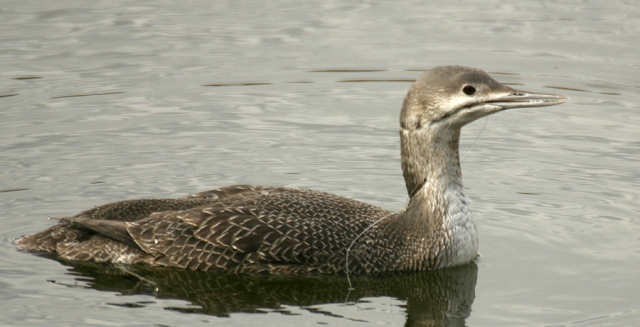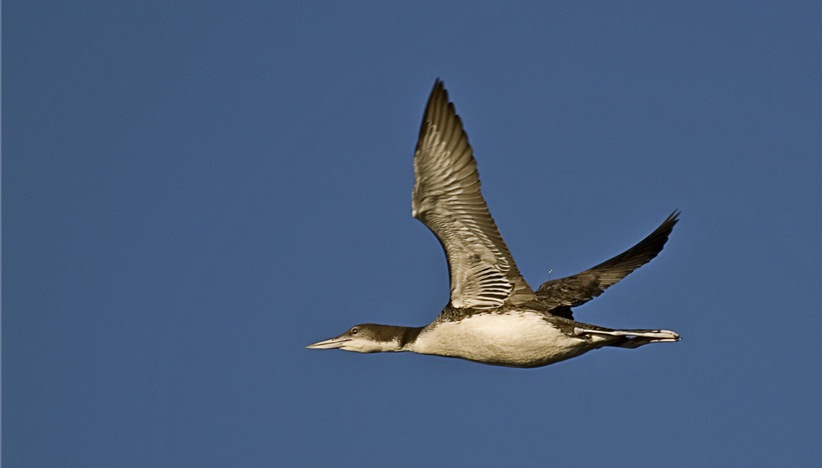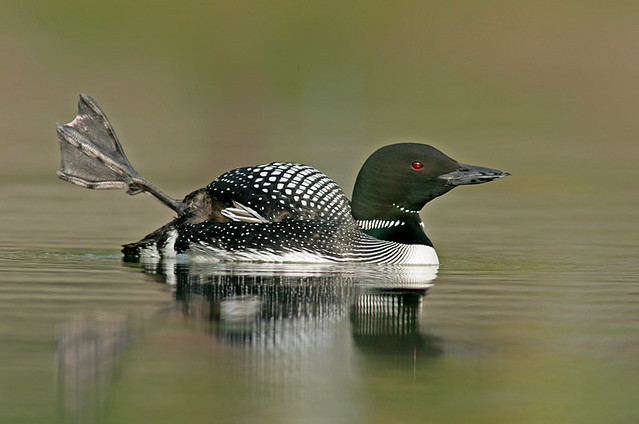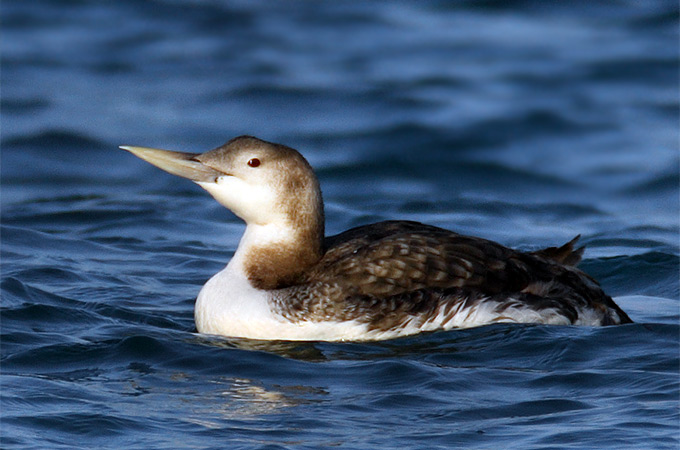Red-throated loons are very
widespread and are not threatened worldwide, but some populations are declining
and are at risk. Factors contributing to
the decline of this species include habitat degradation and loss, fishing lines,
oil spills, and offshore wind turbines.
Loons, like other aquatic birds, are also negatively impacted by high
levels of mercury in the environment.
These factors, combined with the natural predation on loons and their
eggs by foxes and gulls, have led to declines in some populations, particularly
in Alaska.
 |
| Red-throat wrapped in fishing line. |
While red-throated loons are not
at risk of extinction right now, it may be beneficial to protect and conserve
the species with habitat enhancement and restoration. This species is protected under the Migratory
Bird Treaty Act of 1918.














